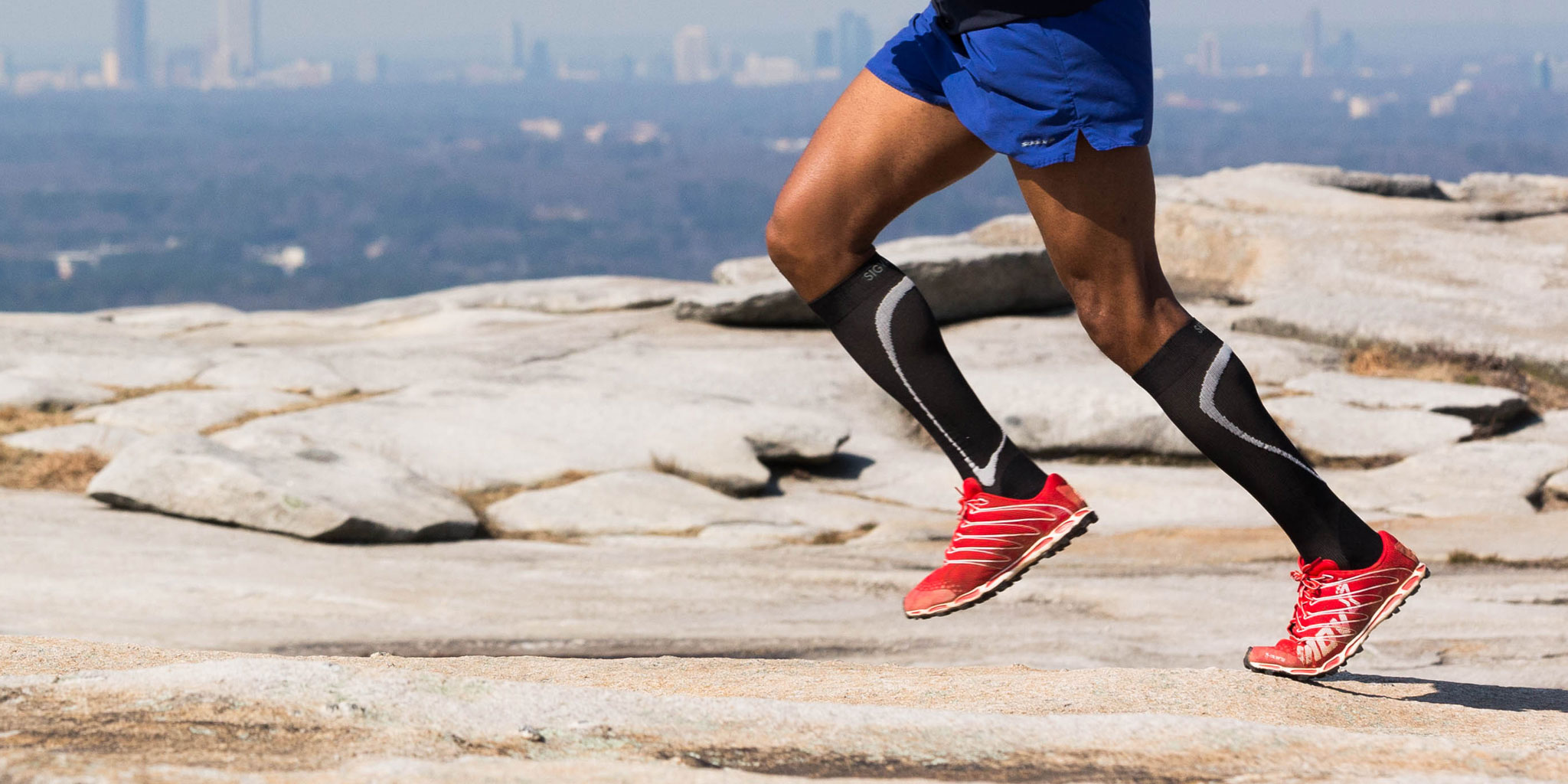Compression is a popular method for managing the symptoms of spider and varicose veins.
Compression stockings offer gradient pressure that is tighter at the foot and loosens as the sock moves up the leg. The graded pressure is helpful in promoting healthy blood flow and reducing swelling and pain as a result of poor circulation. Now, compression socks are becoming the rage among professional and amateur athletes for their ability to improve performance. Do athletic compression socks provide the benefits hoped for?
The Theory behind Compression
Studies have proven the advantages of gradient compression on circulation, which is why they have been worn by people who are bedridden or have developed some types of vein conditions for many years. The same theory is behind the ability of these stockings to improve athletic performance. If blood flow to the leg and back to the heart is increased, oxygen and nutrients that travel through the bloodstream to the leg should also increase.
If oxygen and nutrients increase during athletic activity, the idea is that muscles will not fatigue as quickly and the body will discover greater endurance. In addition, compression socks have been touted as reducing swelling during and after exercise and aiding in the elimination of lactic acid that is generated during physical activity.
Compression and Performance
Although some manufacturers of these socks claim they will improve athletic performance, studies have not been conclusive. While some research suggests that athletes that wear compression socks may see slight improvement to their performance levels, the placebo effect has not been ruled out as the cause. Endurance is another benefit that has little evidence to back it up other than the claims of athletes that have used the socks.
Compression and Recovery
Data supporting the idea that compression socks can aid in recovery after exercise is better documented. It has been found that athletes that wear the socks after a workout may experience less pain and cramping and faster recovery than those that do not wear the socks. Certainly compression socks can minimize post-workout swelling, which in turn can make the legs feel more comfortable during the recovery process.
Varicose Veins
For athletes that suffer from bulging, uncomfortable varicose veins, compression therapy certainly has its place in the workout regimen. Athletes may wear compression stockings during and after exercise to maintain healthy blood flow and reduce uncomfortable symptoms. The reduced swelling seen with compression stockings can also be a boon to varicose vein-stricken athletes that tend to see more of this side effect after workouts due to the higher pressure in their veins.
If you suffer from symptomatic varicose veins, compression socks may be just the ticket for keeping you more comfortable during your workouts. However, those socks will not “cure” veins that have already become varicose. This means you will have to continue to wear the stockings indefinitely to maintain the positive results they offer.
Many athletes turn to more permanent solutions for their varicose veins, in minimally-invasive treatments that completely eliminate the swollen vessels and their painful symptoms. At Vein Specialists of the Carolinas, we offer a variety of vein treatments that allow us to tailor your procedure to your unique needs. All of our procedures are performed right in our office on an outpatient basis and patients typically return to their daily schedules as soon as treatment is over.
Don’t let uncomfortable varicose veins get in the way of your athletic training. Contact Vein Specialists of the Carolinas today at 704-861-2072 or 704-544-5245 to find out which vein treatment is right for you.
“All We Do Is Veins, All Day Every Day.”

